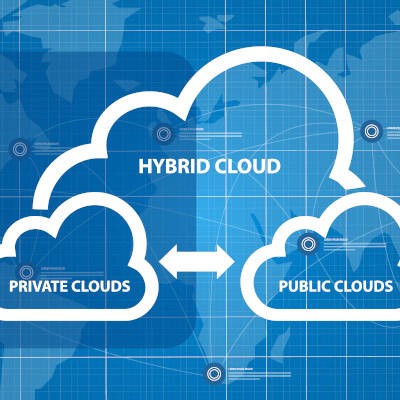The cloud is one way that businesses are changing their operations for the better. Not only does the cloud enable organizations to function in drastically different ways from the status quo, it also gives businesses countless opportunities to reduce costs. Here are just a few ways you can expect the cloud to reduce your expenses and improve your return on investment for IT resources.
Look, we are big fans of the cloud, especially for data storage, but you shouldn’t implement the cloud without a solid security strategy. Whether you are using it for your business’ data storage needs or just to take backups of your infrastructure, you’ll still need to keep various facets of security in mind for your cloud storage. It all starts with figuring out how secure your cloud provider really is.
Cloud computing has been a hot topic in IT circles for a few years. First because of the skepticism that many IT professionals had for the practice, and now that it is a mainstream business technology, ways to boost security to protect the organization who has embraced this computing strategy. We’re here to tell you that while cloud computing is convenient, flexible, and seemingly affordable, there are instances where having physical machines makes more sense for a business.
The cloud is a great opportunity for businesses to increase accessibility of data and enhance productivity, especially while remote, but for those who do not know how to approach it, the cloud can be intimidating. Today, we are going to make the case for a private cloud solution and why you should consider it as a viable option for your business, even if it does not seem like it at the moment. You might be surprised by what you learn!
After the past few years, the hybrid workplace has risen in its perceived value, the benefits of allowing employees flexibility in where they work from becoming very clear. That said, while the hybrid workplace is much closer to a reality than ever before, there are a few hurdles that must be cleared first.
When it comes to implementing new technology solutions, it’s easy to get distracted by all of the great possibilities and miss all of the challenges that it represents. The cloud in particular represents countless chances to improve operations and enhance efficiency, but the side of this is that there are many issues that could arise during the cloud migration process. Let’s consider some of these challenges and how we can help you get around them.
All businesses require software of some sort, but utilizing software comes with its own fair share of frustrations. How do you manage all of the licenses? How do you even afford the often high capital expense that comes with equipping all of your users with the programs they need? Thankfully, the cloud comes to the rescue once again with what’s called Software as a Service.
The cloud is a well-established option for businesses to embrace nowadays. So much so, in fact, that the benefits of migrating their data environment to the cloud have encouraged many to take the plunge (or would that thematically be ascent?) into cloud-delivered services. These transitions don’t come without their issues, of course. Let’s go over a few of the most common challenges that a business encounters when performing a cloud migration.
Whether you are just a fledgling small business just trying to get your feet off the ground or a larger-scale enterprise with a multitude of clients, one thing will always remain the same: in today’s business world, the cloud is king, and it has the potential to change the way that your business operates for the better.
Today’s technology provides businesses with more options than they’ve ever had, including where they want to host their critical infrastructures. This decision will often boil down to between an onsite hardware implementation or utilizing the cloud. Let’s consider the differences that your decision needs to reflect.
Do you realize how much paper you use each year? Do you realize how much paper you have stored in your office? Do you realize that none of that is necessary? Today, digital filing systems as a part of a document management strategy can keep you from wasting your business’ resources on paper, filing, and printing. Here’s how:
Profitability is less the measure of being able to turn a profit, and more the measure of how much profit you can make. For the successful small business, the integration of technology can dictate what kind of annual margins you are looking at. For the new company, however, it can be something even more critical: the difference between setting a course for success, or wallowing in failure. Today we analyze the cost difference between hosting your IT in-house, or choosing to host it in the cloud.
The cloud has proven to be an extremely useful tool for the modern business. Not only does it provide anywhere-anytime access to applications, processing, storage, et al; it also delivers those products as a service, allowing you to budget for recurring costs rather than major upfront ones. This provides your organization with functional, supported, and secure computing environments that eliminate a lot of the support costs that traditional computing environments require. It sounds like a perfect scenario for small and large businesses alike, but things aren’t always what they seem, as a lot of cloud users have found that they have incurred several hidden costs by using cloud platforms. Today, we take a look at these hidden costs.
We spend a lot of time considering cloud solutions, and as a result, we have a very easy time seeing how much they can do to help support your office’s productivity (especially now, when it isn’t really recommended that anyone congregate in the office). That’s why, for this week’s tip, we wanted to go over how you can help even your remote workforce be more productive by using cloud technology.
March 31st is World Backup Day, which makes it the perfect opportunity to share the benefits of implementing a complete backup plan. Unfortunately, the current COVID-19 pandemic and the resultant business interruptions make World Backup Day only too timely this year. Here, we’ll examine how these times make a business continuity strategy and data backup all the more important to have.
All types of businesses use cloud resources as a part of their IT infrastructure. It allows them to turn what was once a major capital expenditure into a controllable operating cost; and, it does it while offering solutions to almost any business problem. The one drawback that most IT professionals agree on is how to gain enough control over a cloud platform to ensure that the platform is secure.





















